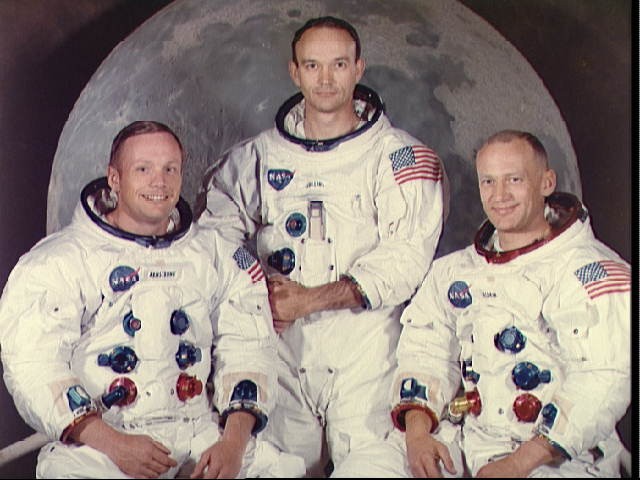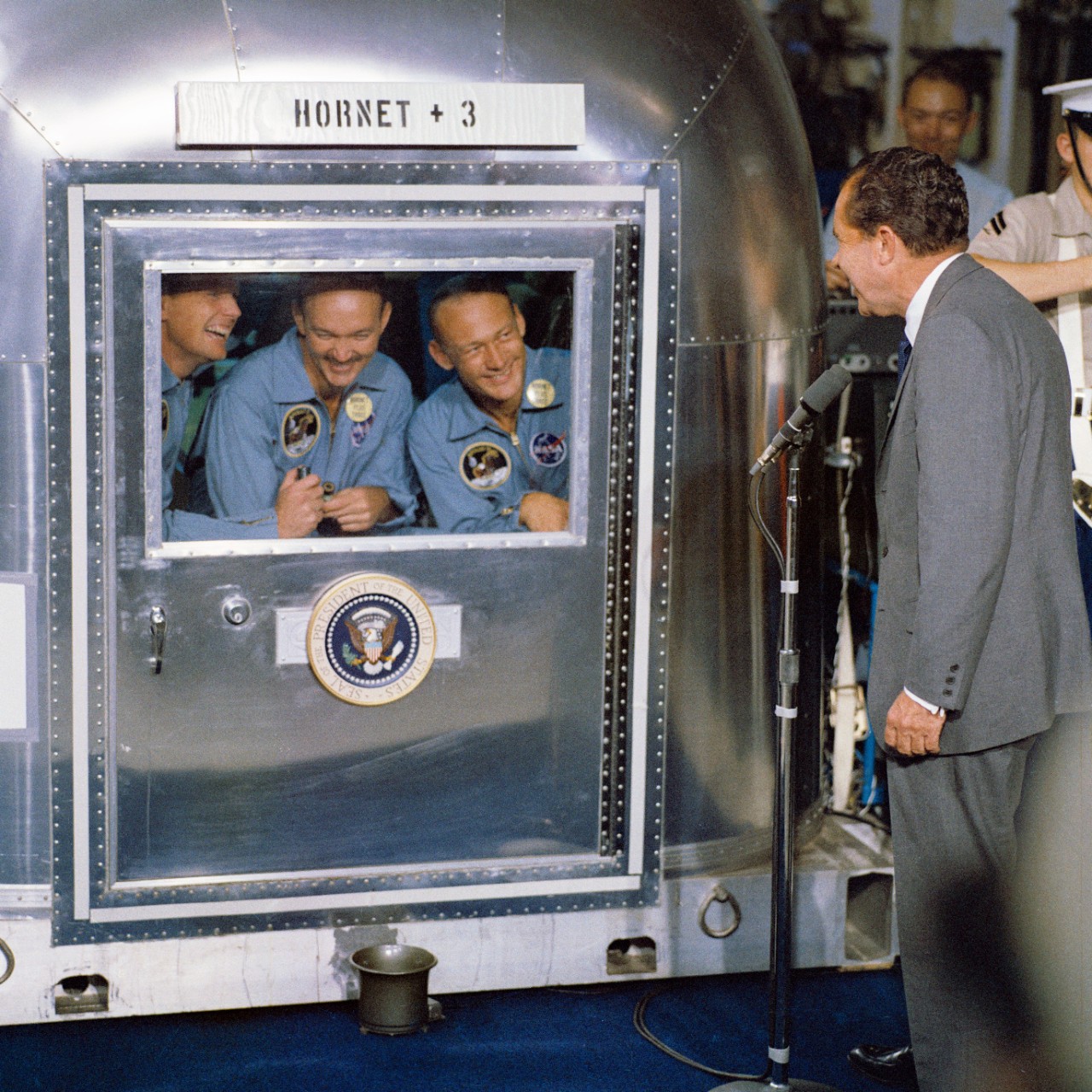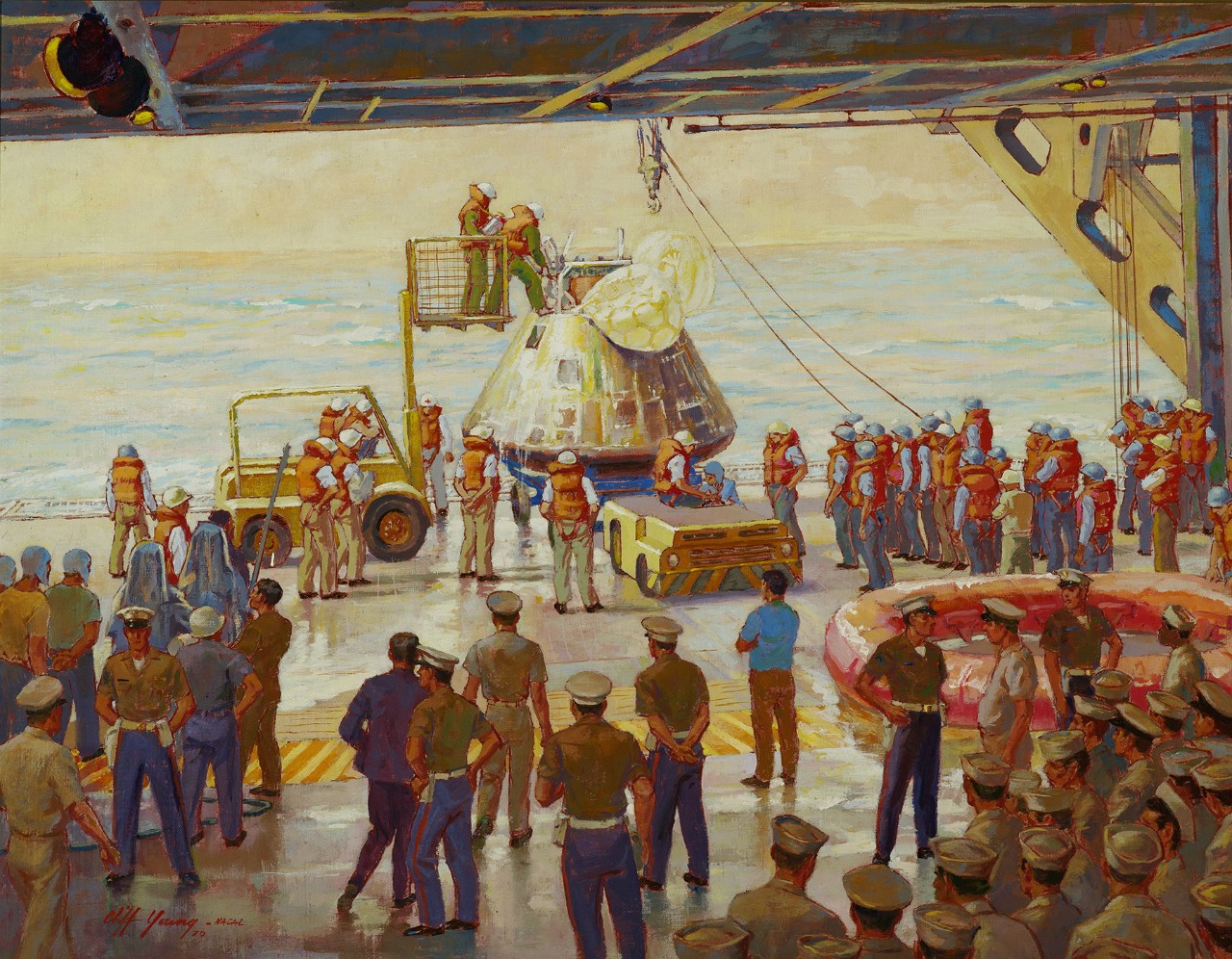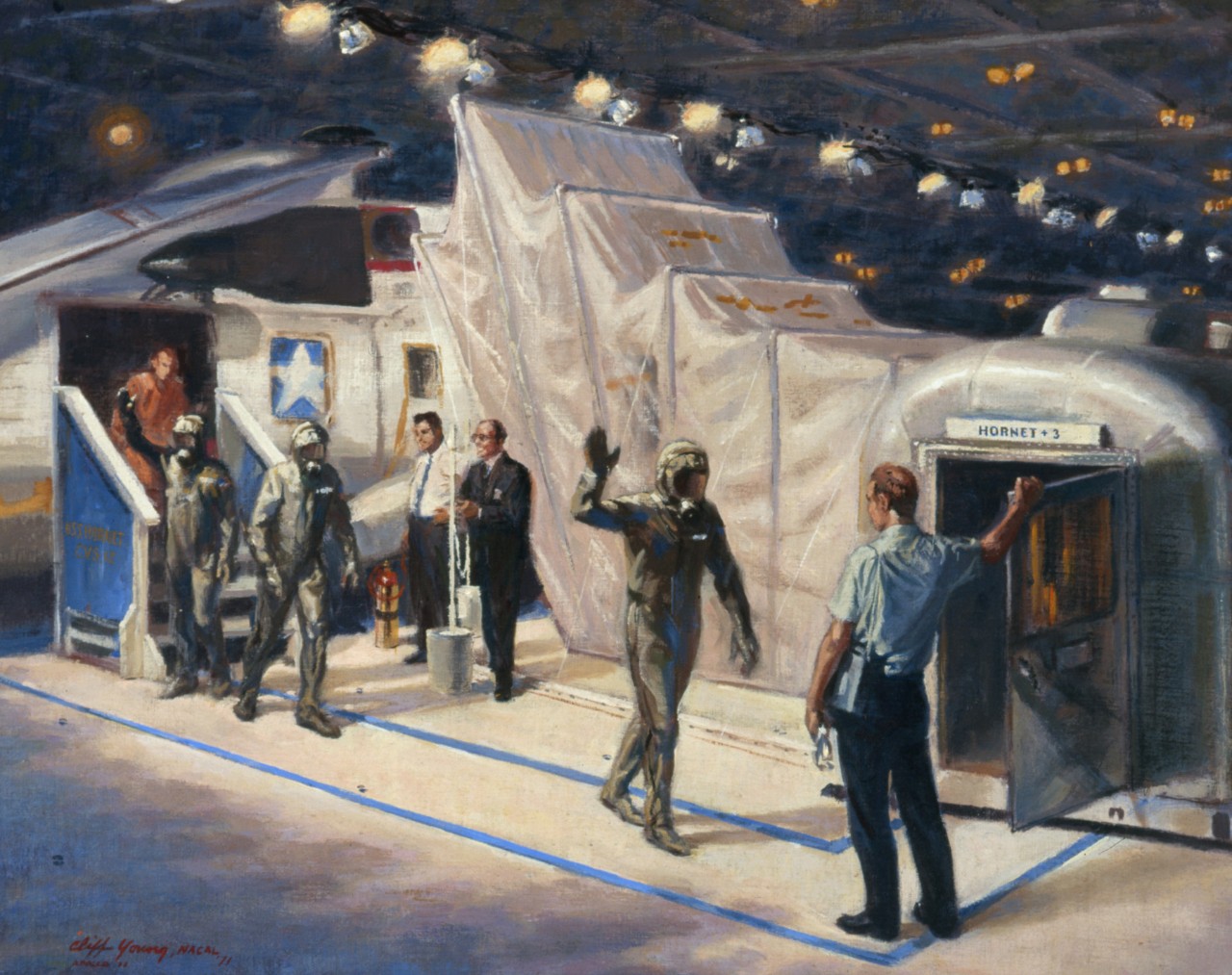Apollo 11
Wearing biological isolation garments, the crew of Apollo 11 are escorted to the Mobile Quarantine Facility (MQF) on USS Hornet to ensure that they did not bring back any contaminants back from the moon. The Airstream trailer would be their home for the next 65 hours. (Painting, Acrylic on Board; by Cliff Young; 1969; Unframed Dimensions 31H X 24W.)
On 20 July 1969, Apollo 11’s astronauts, Commander Neil Armstrong, Command Module Pilot Michael Collins, and Lunar Module Pilot Edwin "Buzz" Aldrin, performed a crewed lunar landing, after which they returned to Earth. An estimated 650 million people watched on their television as former naval aviator Armstrong became the first person to set foot on the moon, stating, “That's one small step for man, one giant leap for mankind.” The mission lasted eight days, and recovery was by HS-4 helicopters from USS Hornet (CVS-12).
For more information about the recovery of Apollo 11, read “Apollo 11: The Navy’s Role in the Recovery Operation.”
Additional Resources
Apollo 11 reports (pdf downloads)
NASA Apollo 11 mission webpage

Official crew photo of the Apollo 11 Prime Crew. From left to right are astronauts Neil A. Armstrong, Commander; Michael Collins, Command Module Pilot; and Edwin E. Aldrin Jr., Lunar Module Pilot. (NASA photo)

President Richard M. Nixon was in the central Pacific recovery area to welcome the Apollo 11 astronauts aboard USS Hornet, prime recovery ship for the historic Apollo 11 lunar landing mission. (NASA photo)

After the astronauts were safely on board USS Hornet, the ship traveled to pick up the 5-ton command module, at which point the boat and aircraft crane was used to bring the module up to the starboard aircraft elevator. The floatation collar was removed and the module was placed on a dolly near the mobile quarantine facility for removal of the lunar rocks and transfer to Johnson Space Center. (Painting, Oil on Board; by Cliff Young; 1969; Framed Dimensions 32H X 40W.)



